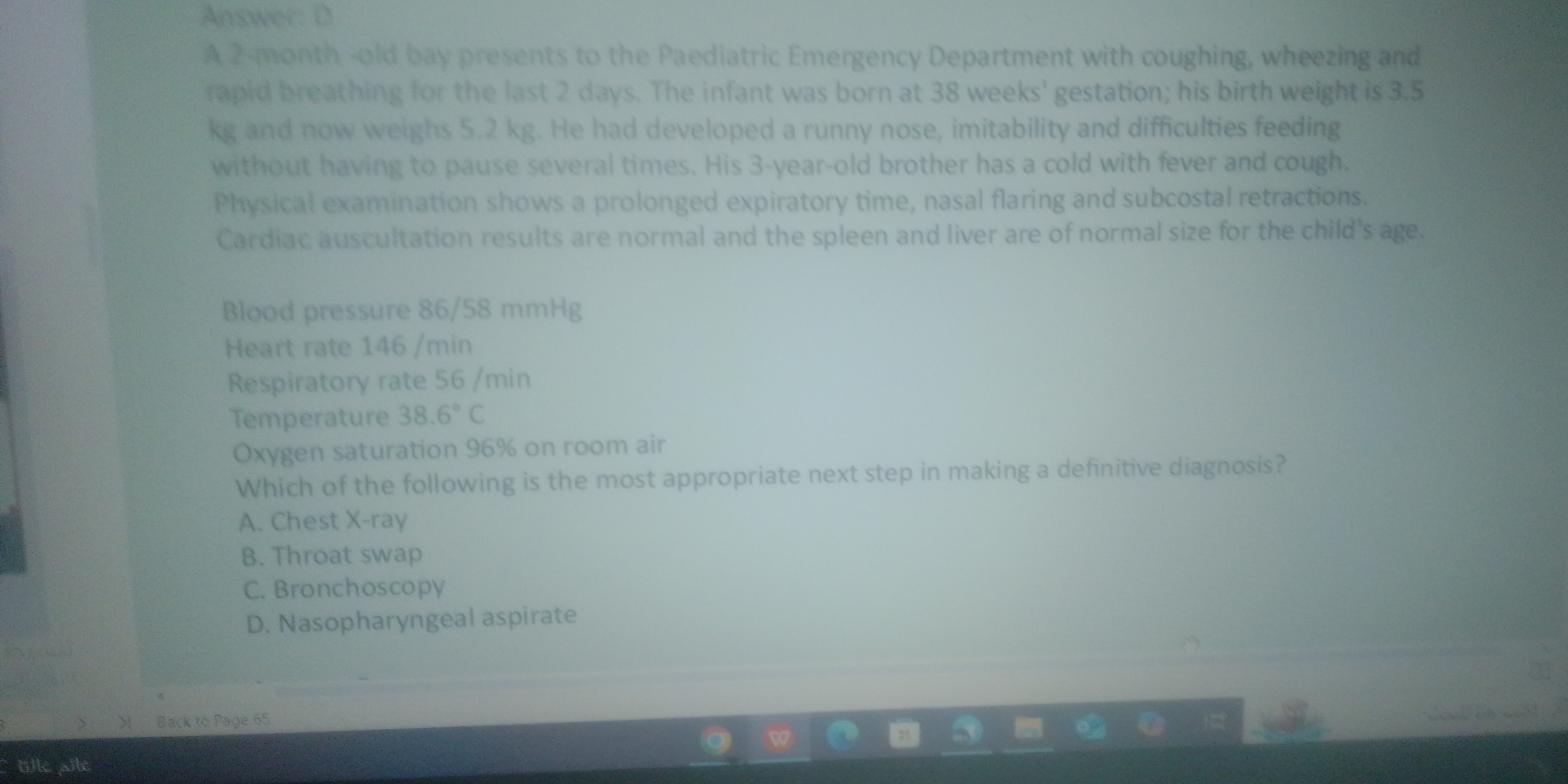Which of the following is the most appropriate next step in making a definitive diagnosis for a 2-month-old infant presenting to the Paediatric Emergency Department with coughing,... Which of the following is the most appropriate next step in making a definitive diagnosis for a 2-month-old infant presenting to the Paediatric Emergency Department with coughing, wheezing, rapid breathing, runny nose, irritability, and feeding difficulties? Physical examination shows prolonged expiratory time, nasal flaring, and subcostal retractions. Vital signs include blood pressure 86/58 mmHg, heart rate 146/min, respiratory rate 56/min, temperature 38.6°C, and oxygen saturation 96% on room air. A. Chest X-ray B. Throat swap C. Bronchoscopy D. Nasopharyngeal aspirate

Understand the Problem
The question describes a clinical scenario of a 2-month-old infant presenting with respiratory symptoms and other findings. It asks you to determine the most appropriate next step in making a definitive diagnosis based on the information provided.
Answer
D. Nasopharyngeal aspirate
The most appropriate next step is D. Nasopharyngeal aspirate
Answer for screen readers
The most appropriate next step is D. Nasopharyngeal aspirate
More Information
Given the infant's symptoms (coughing, wheezing, rapid breathing, runny nose, fever, irritability, and feeding difficulties) and the physical exam findings (prolonged expiratory time, nasal flaring, and subcostal retractions), bronchiolitis is suspected. The brother's recent cold also points towards a viral etiology. A nasopharyngeal aspirate is the most appropriate next step to identify the specific virus causing the bronchiolitis, such as RSV (Respiratory Syncytial Virus).
Tips
When dealing with pediatric respiratory distress, consider the most common causes for the age group. In infants, bronchiolitis is high on the list. Prioritize non-invasive diagnostic tests first.
Sources
AI-generated content may contain errors. Please verify critical information